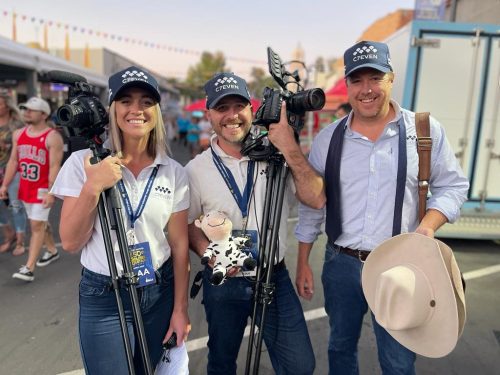Latest News and Industry Insights
Capturing quality content in the moment!
It’s never been easier to capture content anywhere, anytime. With our smartphones always within arm’s reach, there’s no reason why great photo or video content shouldn’t be part of any business marketing and communications plan. In our latest blog, we provide tips and tricks for capturing great content on the go!
Why is visual media so important to engaging comms, you ask? For starters, 80% of everything humans learn is thanks to what they see, meaning the images and video you use can have a huge impact on the success of written content and marketing strategies. Furthermore, content that includes visuals performs vastly better in terms of recall with 65% of people recalling messaging several days later, and 80% within a few hours.
Every day we create and consume content habitually and without too much thought. How often do you take a photo for social media or share videos with friends? At the time you’re reading this, think about how many times since you woke up today you’ve read an article with imagery, browsed Instagram or Tik Tok, or looked at a TV or magazine? Don’t forget about all the many, many instances of out of home advertising you passively consume just on your way to work on billboards, buses and posters. Such content is embedded in our lives and whether we know it or not, every day, we participate as both creators and consumers of visual content.

Image Basics
There are a number of simple considerations to keep in mind when taking photos that can elevate your end result including orientation, framing and lighting.
Most people would be familiar with a portrait (vertical) vs landscape (horizontal) orientation, but knowing when to apply each of these can be the difference between a good photo and a great photo. As the name suggests, a portrait style photo is ideal for portraits of people, or when the subject matter is taller than it is wider. Landscape style is ideal for comprehensive images that create depth, scale and context. It’s also important to consider where your image might end up being used. Social media apps are generally better suited to portrait style content that fits nicely on your phones screen, while landscape imagery is preferred for use on the web and in printed publications.
Lighting can be a challenge depending on whether you’re inside or outside, the type of lights overhead or the position of the sun. If you’re capturing content indoors, try to use a window for soft natural lighting rather than harsh ceiling lights. If indoor lighting is required, keep it to one light source which can better mimic the sun. When outdoors, it’s better to capture images in the shade or on an overcast day, and definitely try to avoid the harsh light in the middle of the day.
Framing your image is the crucial last step. Use the ‘grid’ function on your phone to bring up the 3×3 grid which will allow you to better balance your composition using the rule of thirds. The rule of thirds calls for the most important elements in the scene to be placed along the gridlines or at the intersections where the lines meet. It may sound strange at first, but by positioning the most important elements off centre, you can create a balanced and eye-catching image. This is not a hard and fast rule and should be considered on a case-by-case basis. In some cases, ignoring the grid can give you a powerful statement image as a result. Great framing can also be achieved by moving your subject away from the background to create depth, and by changing up the angle so it isn’t front on.

Portrait orientation

Landscape orientation
Video
Many of the visual tips for photography can be applied to video, however the most important factors to consider for a great video are framing, steadiness and of course, audio!
Unless you need to film a long form video, it’s usually better to keep it nice and short. You don’t need a lot of content to make a big impact! Snackable content is easily consumed on platforms like Tik Tok, Instagram and Facebook, and can cut through content heavy environments and leave a lasting impression.
Unlike photography, which can sometimes benefit from an upward or downward angle, video is best captured at eye height and from the waist up. Unless your subject is far away to show special context, any video featuring a person speaking should avoid showing the full body in frame. A great tip to minimise camera movement while filming without a tripod is to lock your elbows against the sides of your body to keep your hands as steady as possible.
Audio quality can make or break a video when it comes to quality and engagement. It only takes a minute to consider outside noises that can potentially interfere with your subject matter. Key considerations to be aware of include avoiding windy areas, keeping away from busy roads and loud noises, and being aware of any potential interference in your surroundings. You can maximise the separation and audio quality picked up by your smartphone by getting closer to your subject matter. When conducting interviews or capturing people talking, a maximum distance of one metre is recommended.
With 2.5 Quintrillion bytes of content produced each day, standing out and gaining message cut through is essential to a successful campaign. By remembering a few simple tips and taking that extra moment to apply them, you can easily create any visual content captured out and about with a professional look and feel.
If your business is interested in engaging our team of professional content creators to help elevate your campaign with captivating content, please reach out today!
By Suzie Hamilton-Cooper
